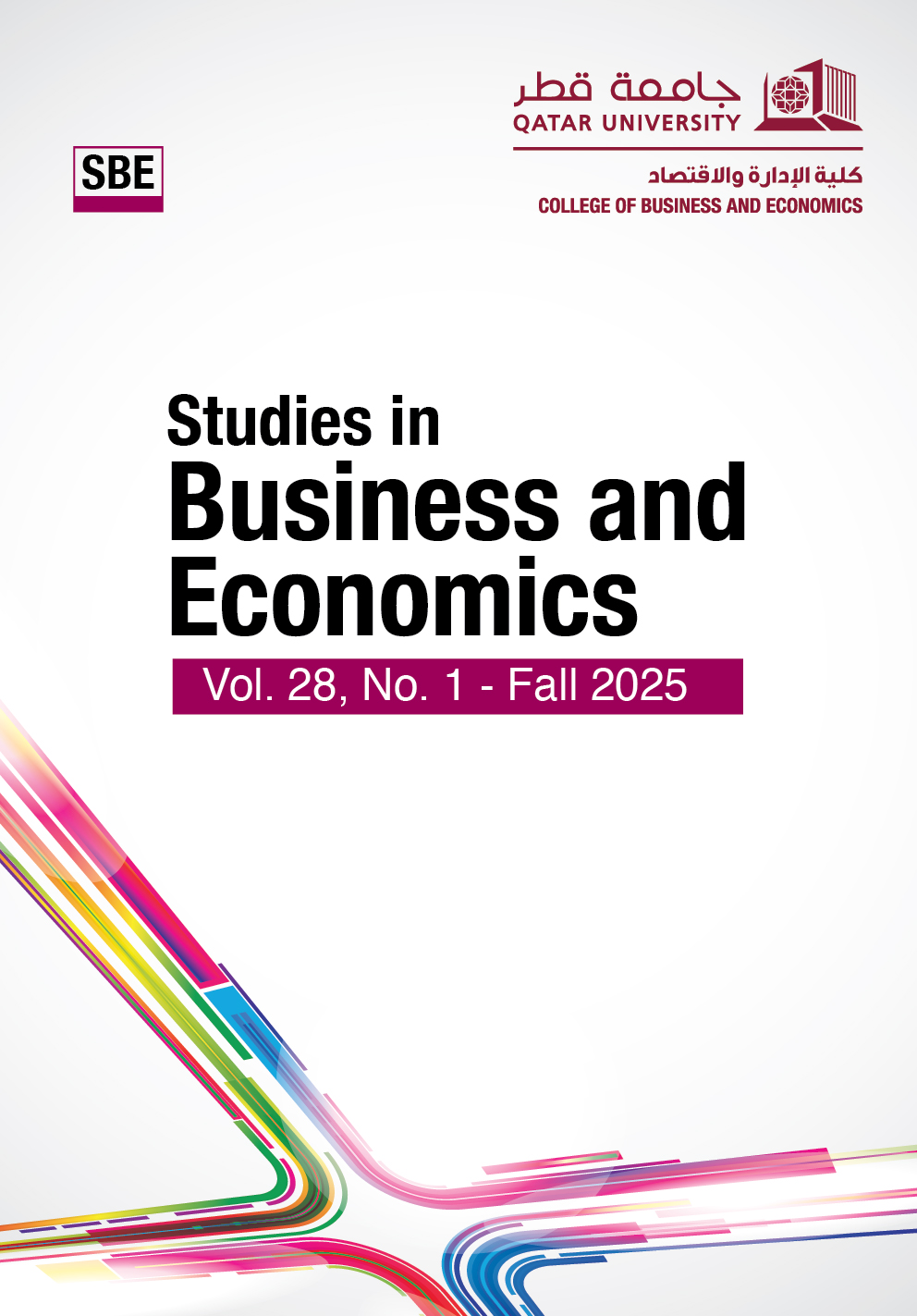Modelling the Dynamic Relationship between Production of Crude Petroleum and Natural Gas and Gross Domestic Product in Qatar during the Period 2000–2022
Abstract
The production of crude oil and natural gas is crucial for Qatar's economy as it supports its indicators of economic development. The gross domestic product (GDP) measures the value added by various economic sectors during a specific period and heavily relies on the surplus generated in Qatar's oil and natural gas sector for growth and development. It is projected that real GDP growth will range between 2% and 2.5% in 2023-2024, driven by strong domestic demand and the ongoing expansion in liquefied natural gas production. Inflation is expected to gradually decline to around 3%. In this study, we used a standardized approach to determine the impact of crude oil and natural gas production on Qatar's GDP. Our methodology involved analyzing data related to the production of crude oil and natural gas, as well as the gross domestic product (GDP) in Qatar. We then constructed a statistical and mathematical model that explains the long-term relationship between these variables. To establish the reliability of our model and interpret the relationship between the variables, we employed causal tests such as the Engle-Granger test and the vector autoregression (VAR) model. Through the response analysis of the model, we found a strong and statistically significant relationship between the production of crude oil and natural gas and Qatar's gross domestic product (GDP).
Metrics
##plugins.themes.bootstrap3.article.details##
Oil and gas productionGDP, Engle-Granger testVAR modelImpulse analysis
2- Kong-Sheng, Z., Yan-Yong, Z. (2021), “Modeling dynamic dependence between crude oil and natural gas return rates: A time-varying geometric copula approach”, Journal of Computational and Applied Mathematics Volume 386, April 2021, 113243
https://doi.org/10.1016/j.cam.2020.113243.
3- Muhammad, A., Lutchmee, N. (2018), “Implications of oil prices shocks for the major emerging economies: A comparative analysis of BRICS”, Energy Economics,Volume 76, October 2018, Pages 76-88, https://doi.org/10.1016/j.eneco.2018.09.023.
4- Salah, N. (2016), “The effects of oil price shocks on the economies of the Gulf Co-operation Council countries: Nonlinear analysis”, Energy Policy,Volume 91, April 2016, Pages 256-267, https://doi.org/10.1016/j.enpol.2016.01.013.
5- US Department of Energy. (2017), “Global LNG Fundamentals”, available at: https://www.energy.gov/sites/prod/files/2017/10/f37/Global%20LNG%20Fundamentals_0.pdf, (accessed on September 20, 2023).
6- Saleh, M., Matej, K. (2014), “Relationship between GDP Growth and Oil and Natural Gas Consumption in EU Countries”, Ekonomický Casopis, Vol. 62, pp. 249-250.
7- Khalid, H. (2011), “Eviews and Economic Measurement”, National Library Department, Amman, pp. 1-3.
8- Min, B., Guna, R. (2018), “Selecting appropriate methodological framework for time series data analysis”. The Journal of Finance and Data Science Volume 4, Issue 2, June 2018, Pages 71-89. https://doi.org/10.1016/j.jfds.2017.11.001.
9- Dickey, D. A, Fuller, W. A. (2006), “Distribution of the Estimators for Autoregressive Time Series witha Unit Root”, Journal of the American Statistical Association, London, Vol. 22, pp. 3-4.
10- Othman, N. (2012), “The use of VAR models in forecasting and studying the causal relationship between Gross Domestic Product and Gross Fixed Capital Formation in Syria”, Damascus University Journal of Economic and Legal Sciences, Vol. 28, Issue 02, Syria, Damascus University, p. 3.
11- Saddam, R. (2019), “The Reality of the Hydrocarbon Sector in Algeria and Its Role in the National Economy Transformation - A Quantitative Study Using the Autoregressive Distributed Lag (ARDL) Method for Fractional Integration Gaps, (ARDL) for the period 1990-2015, in the financial and markets sectors”, Finance & Markets Journal, Vol. 05, Issue 10, pp. 2-3.
12- Jan, B., Tom, E. (2001), “A revival of the autoregressive distributed lag model in estimating energy demand relationships”, Energy Volume 26, Issue 1, January 2001, Pages 45-55. https://doi.org/10.1016/S0360-5442(00)00052-9.
13- Kamal, Z. (2017), “Study and Analysis of the Shocks of Economic Stability Variables on the Banking Distress Index in Algeria during the Period 1980-2015”, Journal of Economic Sciences, Management, and Business Studies, Vol. 05, Algeria, p.1.
14- Tao, N., Wu, T., & Yan, G. (2001). “To the test of economic recovery: The swings in energy resource prices“. Resources Policy, 89, 104593.
15- Bibi, S. (2024). Oil revenues, “FDI and Balance of Payment dynamics: the case of Kazakhstan between the Supercycle Commodity boom and Financial Subordination“. Resources Policy, 90, 104789.
16- Afees, A., Kazeem, O. (2017). “Revisiting the oil price and stock market nexus: A nonlinear Panel ARDL approach “. Economic Modelling ,Volume 66, November 2017, Pages 258-271.
17- Afees, A., Tirimisiyu, F. (2015). “Modelling oil price–US stock nexus: A VARMA–BEKK–AGARCH approach “. Energy Economics, Volume 50, July 2015, Pages 1-12, https://doi.org/10.1016/j.eneco.2015.03.031.


